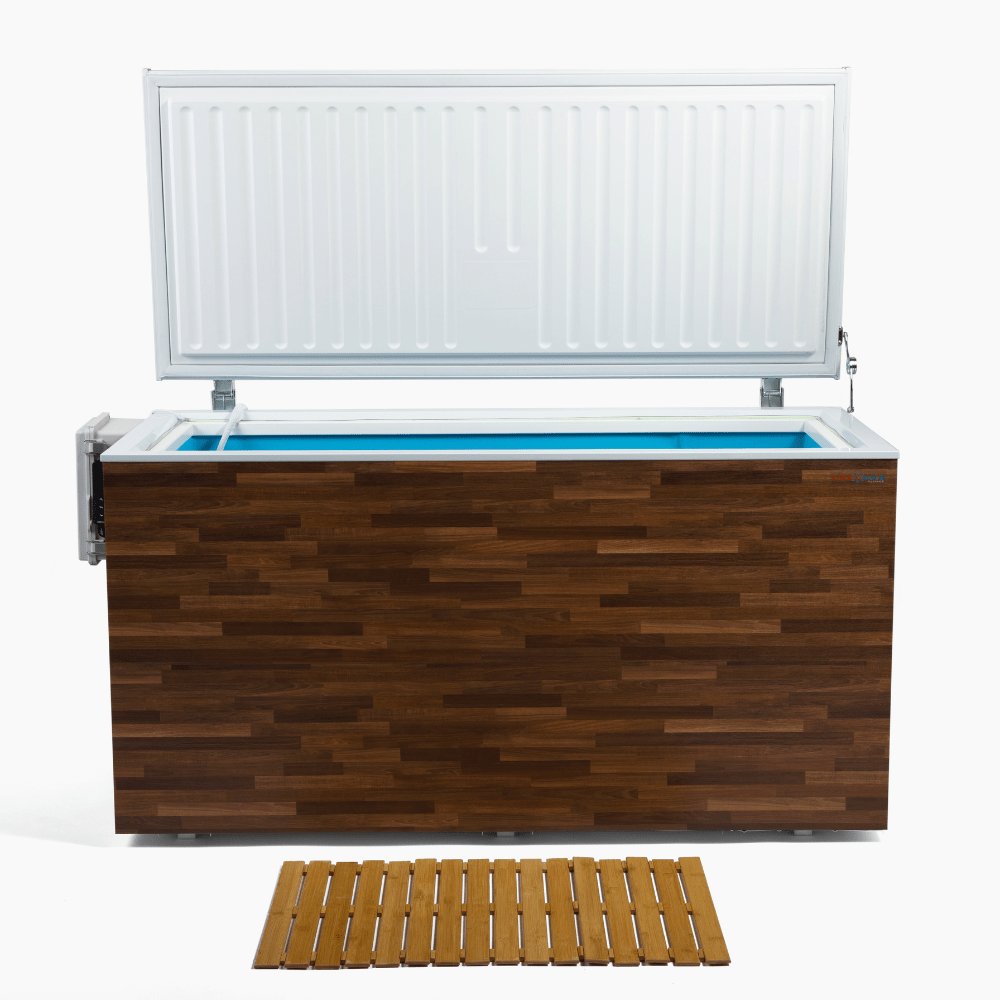Investing in a Fire Cold Plunge is one of the best decisions you can make for mental clarity and overall wellness. But like any equipment, your plunge needs routine attention to stay in peak condition.
If you’re experiencing issues, this cold plunge troubleshooting guide will help you identify what’s wrong and get you back to reliable plunging. We cover everything from plunge maintenance basics to recognizing when it’s time for a cold plunge filter change to support you through common issues.
Power Problems

If your tub isn’t powering on, the most common culprit is the GFCI outlet. Every Fire Cold Plunge includes a GFCI adapter for added safety.
Press the reset button. If the unit powers up, you’re all set. If not:
-
Check your home’s breaker panel.
-
Inspect for an additional tripped GFCI outlet nearby.
-
Confirm the system power button is switched on.
No Water Flow or Bubbles From the Jet
If your tub has no visible jet or bubbles, the issue usually lies with the pump or ozone tubing. These components are central to water circulation and sanitation, so keeping them in working order is a core part of regular plunge maintenance.
Try these troubleshooting steps:
-
Ensure the pump is fully submerged. Running it dry can burn out the motor.
-
Set the flow control dial on the side of the pump to the “+” (maximum) position.
-
Verify the ozone tube is attached securely to the pump nozzle and is free from kinks or blockages.
If the pump is plugged in and there’s still no jet, try connecting it to a separate wall outlet to rule out power strip issues.
Cloudy or Smelly Water
If your water isn’t staying clear, this is your signal that a cold plunge filter change is due or that water sanitation steps were missed.
-
Clean filters with soap and hot water every one to two weeks.
-
Replace them every three months or sooner if they’re discolored or smelly.
A dirty or clogged filter disrupts water circulation and allows bacteria to build up.
Water Temperature Isn’t Staying Consistent
If your water fluctuates or doesn’t stay at the set temperature:
-
Double-check that the thermostat power cord is firmly plugged in.
-
Ensure the temperature probe is placed correctly in the water.
-
Reset the thermostat by holding the SET, UP, and DOWN buttons until the display shuts off. Then, enter your desired temperature again.
For detailed setup visuals, scan the QR code that came with your unit.
LED Lights Not Working
No lights? First, open the control box and verify that the USB power cable is plugged into the power strip. If it’s connected and there’s still no power, plug it into another USB outlet to confirm if the issue lies with the LED strip or the power source.
Replacement parts and video instructions are available by request if needed.
Error Codes on the Thermostat Display
The thermostat display is designed to alert you to setup or performance issues. Common codes include:
-
ERR: The temperature probe isn’t fully connected. Try firmly reinserting it into the thermostat port.
-
EAH: This means the probe is out of the water or the max temperature setting has been altered. Ensure the probe is submerged, then reset the system by holding SET + UP + DOWN until the display shuts off.
-
EAL: This signals that water has dropped below the low alarm limit. Check your AL setting and adjust if needed.
When To Drain and Refill Your Plunge
Generally, we recommend draining a cold plunge every one to three months, depending on how often you use it and whether you’re incorporating sanitation additives.
We’ve compiled a complete guide to how often you should change your water, but here’s a quick overview of the process:
-
Use a bilge pump or siphon vacuum to remove most of the water.
-
Wipe the interior with a towel, rubbing alcohol, or hydrogen peroxide.
-
Refill before powering back on.
Keeping a clean schedule and draining a cold plunge regularly prevent buildups that can damage internal components.
Preventive Maintenance for Long-Term Reliability

Every unit benefits from routine upkeep. Here are the non-negotiables for plunge maintenance:
-
Never run the pump dry.
-
Keep children and pets away from the unit.
-
Use the default ozone cycle during non-use hours (usually between 11 PM and 5 AM).
-
Inspect power cords and tubing monthly.
-
Maintain your schedule for cold plunge filter change and water sanitation.
Your cold plunge should also be installed in a stable, shaded environment and supported by flooring rated for at least 1,000 lbs. This will ensure it safely accommodates your cold plunge dimensions.
Keep Your Plunge Performing at Its Best
Staying proactive with routine checks makes cold plunge troubleshooting quick and stress-free. Best of all, a well-maintained cold plunge rewards you with a better recovery experience. And if something doesn’t feel right, most issues have simple fixes when caught early.
Learn more about Fire Cold Plunge, our story, and our design philosophy.
Ready to take the next step? View our cold plunge tubs or call us at (361) 209-7324 for inquiries.



Share:
Does a Cold Plunge Help With Anxiety?
What Do 3-Minutes in An Ice Bath Do?